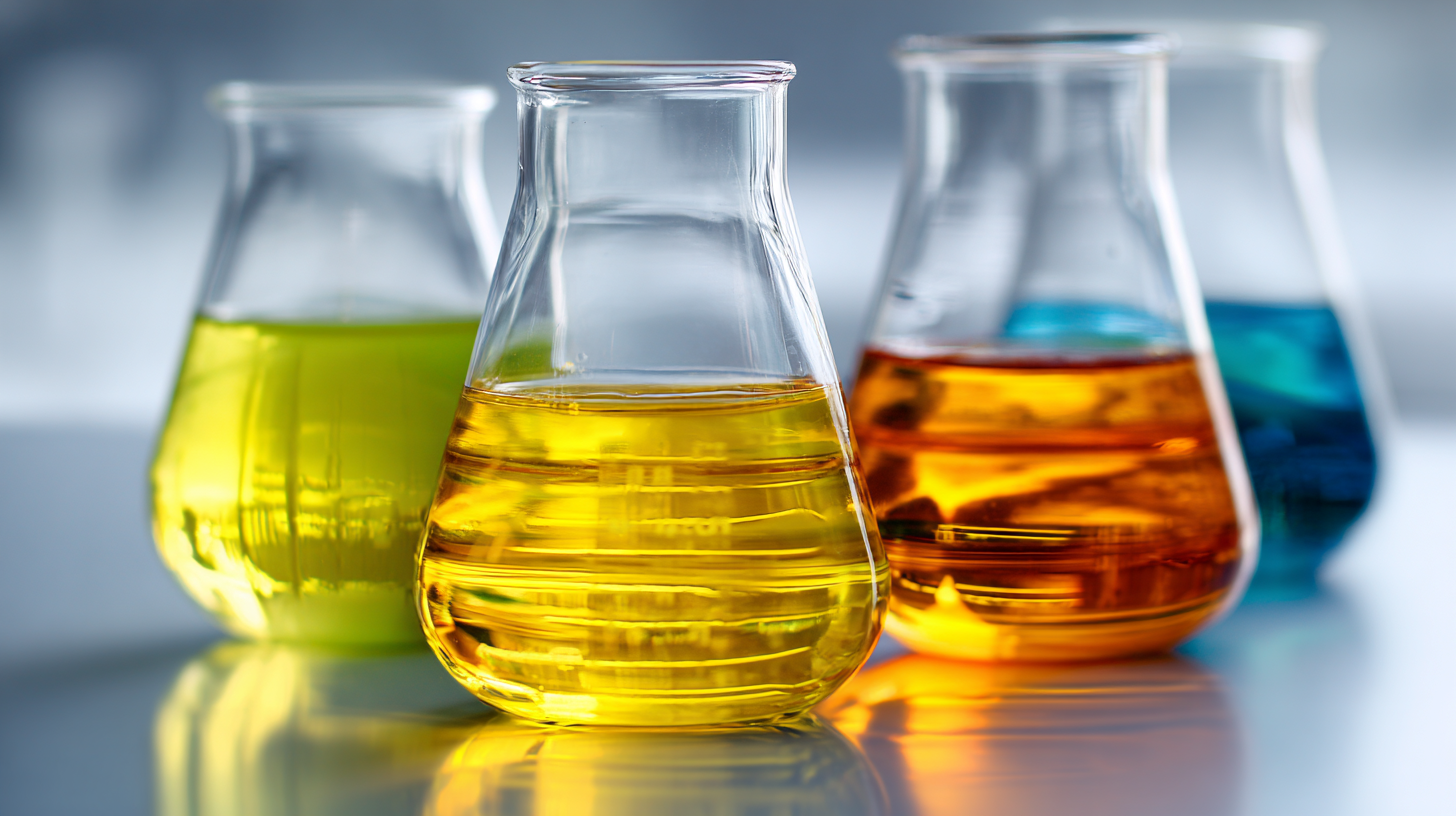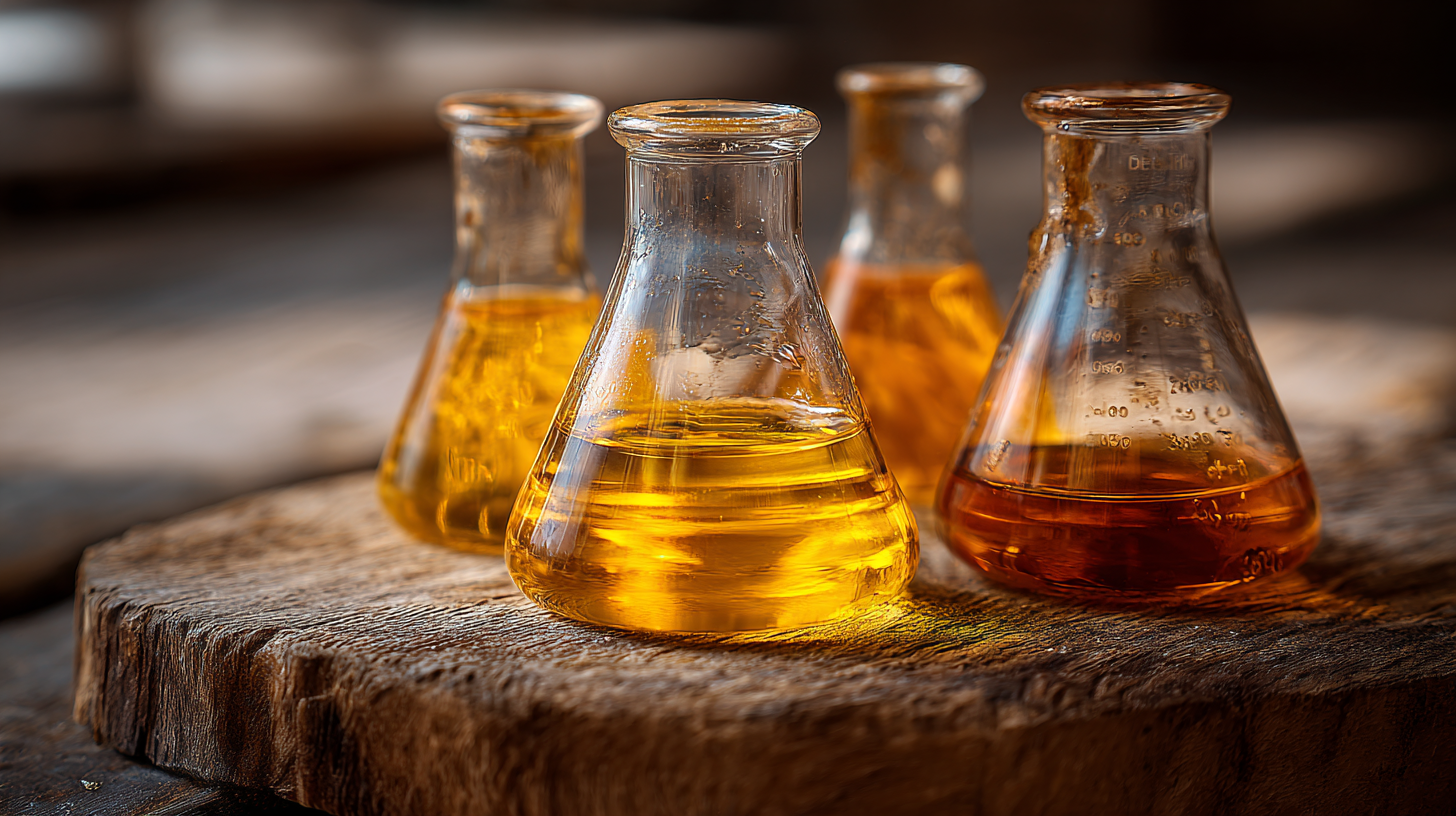
News
Exploring Industry Applications of Best Ethyl Acetate and How to Maximize Its Benefits
In recent years, Ethyl Acetate has emerged as a versatile solvent and an essential compound in various industries, including food, pharmaceuticals, and coatings. According to a report by MarketsandMarkets, the global Ethyl Acetate market is projected to grow at a CAGR of 4.8% from 2020 to 2025, reaching an estimated value of $1.3 billion by the end of the forecast period. This growth is driven by its increasing application in the production of paints, adhesives, and in the extraction processes within the food industry. With its favorable properties such as low toxicity, quick evaporation, and biodegradable nature, businesses are increasingly exploring ways to maximize the benefits of Ethyl Acetate, ensuring compliance with environmental regulations while enhancing operational efficiency. As we delve into the industry applications of this compound, we will highlight strategies that companies can adopt to leverage Ethyl Acetate's unique attributes effectively.

Understanding Ethyl Acetate: Properties and Advantages for Various Industries
 Ethyl acetate, a colorless liquid with a sweet smell, is widely recognized for its versatility and effectiveness across various industries. This organic compound boasts properties such as a low boiling point, high solvency, and rapid evaporation, which make it an ideal solvent in processes ranging from coatings to pharmaceuticals. In the paint and coatings industry, ethyl acetate is prized for its ability to create smooth finishes, while in food processing, it serves as a natural flavoring agent and preservative due to its Generally Recognized as Safe (GRAS) status.
Ethyl acetate, a colorless liquid with a sweet smell, is widely recognized for its versatility and effectiveness across various industries. This organic compound boasts properties such as a low boiling point, high solvency, and rapid evaporation, which make it an ideal solvent in processes ranging from coatings to pharmaceuticals. In the paint and coatings industry, ethyl acetate is prized for its ability to create smooth finishes, while in food processing, it serves as a natural flavoring agent and preservative due to its Generally Recognized as Safe (GRAS) status.
The advantages of ethyl acetate extend beyond its application as a solvent. Its biodegradability is a significant benefit for industries aiming to reduce their environmental impact. Manufacturers are turning to this solvent for cleaner production processes, as it yields fewer volatile organic compounds (VOCs) compared to alternatives. In the extraction of natural products, ethyl acetate is favored for its efficiency in isolating desired compounds from plant materials. By understanding these properties and advantages, businesses can leverage ethyl acetate effectively to enhance product quality and environmental sustainability.
Key Industrial Applications of Ethyl Acetate and Their Benefits
Ethyl acetate is an essential solvent widely used across various industries due to its favorable properties, such as its low toxicity and high evaporation rate. The paint and coatings industry is one of the primary applications, with ethyl acetate serving as a solvent in the formulation of lacquers and enamels. According to a report by Grand View Research, the global paint and coatings market is expected to reach USD 255.8 billion by 2024, and the demand for effective solvents like ethyl acetate will undoubtedly grow alongside it. By incorporating ethyl acetate, manufacturers can enhance application properties and achieve a superior finish, significantly increasing market competitiveness.
In the food and beverage sector, ethyl acetate plays an integral role in flavor extraction and food processing. It serves as a food-safe solvent for extracting flavors from natural products, which is crucial for the production of essential oils and various food flavorings. A study published in the Journal of Food Science indicated that ethyl acetate has a high selectivity for volatile compounds, making it an efficient choice for recovery processes. The rising trend of natural and organic food products further amplifies demand for ethyl acetate, as processors seek clean-label ingredients that meet consumer preferences for safety and quality.
Best Practices for Maximizing Ethyl Acetate Efficiency in Production
When optimizing the use of ethyl acetate in production, it is essential to employ best practices that enhance its efficiency while maintaining quality standards. According to the "Global Ethyl Acetate Market Report," the compound is widely used in industries such as paints, coatings, and adhesives, which collectively account for over 50% of its consumption. To maximize benefits, manufacturers should focus on process optimization techniques, such as adopting closed-loop systems to reduce solvent loss during production. This not only improves yield but also helps in complying with environmental regulations.
Moreover, accurate monitoring of operating conditions can significantly boost the efficiency of ethyl acetate use. The American Chemical Society emphasizes the importance of maintaining optimal temperature and pressure parameters, which can lead to a 20% increase in reaction efficiency. Additionally, implementing advanced distillation technologies can recycle ethyl acetate, thereby reducing overall costs and waste. By leveraging such strategic practices, industries can enhance their production processes while also contributing to sustainability goals in chemical manufacturing.
Safety and Environmental Considerations When Using Ethyl Acetate
When exploring the applications of ethyl acetate across various industries, it is crucial to prioritize safety and environmental considerations. Ethyl acetate is widely utilized as a solvent in paint, coatings, and adhesives due to its effectiveness and low toxicity compared to other solvents. However, ensuring a safe working environment requires proper handling and personal protective equipment (PPE) to mitigate risks associated with inhalation and skin exposure. Employers must provide training and resources to promote safe use practices, including proper ventilation and storage.

Environmental considerations are equally critical when using ethyl acetate. Although it is biodegradable, releasing it into the environment can still pose risks. Therefore, companies should adopt green chemistry principles by minimizing waste and utilizing closed systems where possible. Implementing recycling processes for ethyl acetate can also significantly reduce its ecological footprint. By focusing on safety protocols and environmentally friendly practices, industries can maximize the benefits of ethyl acetate while safeguarding both worker health and the planet.
Future Trends in Ethyl Acetate Usage Across Different Sectors
The future of ethyl acetate usage across various sectors appears promising, driven by its versatility and eco-friendly attributes. In the food industry, for instance, ethyl acetate is emerging as a preferred solvent for flavor extraction, accounting for approximately 25% of the solvent market due to its safe profile and efficiency (Market Research Future, 2023). This trend is further propelled by the increasing demand for natural food additives, expected to grow at a CAGR of 8.5% over the next five years. Companies are rapidly adopting ethyl acetate as a cost-effective alternative to traditional solvents, aligning with regulatory shifts toward more sustainable practices.
In the coatings and adhesives sector, ethyl acetate is gaining traction as a solvent of choice due to its rapid evaporation rate and minimal environmental impact. The global coatings market, which is projected to reach $255 billion by 2027, is increasingly incorporating bio-based solvents, with ethyl acetate representing a significant portion of that growth (Grand View Research, 2023). Additionally, with automotive and construction industries bolstering eco-friendly initiatives, the continued adoption of ethyl acetate can optimize performance while reducing harmful emissions. As sustainability becomes paramount, innovations surrounding ethyl acetate formulations are set to revolutionize its applications across industries.





